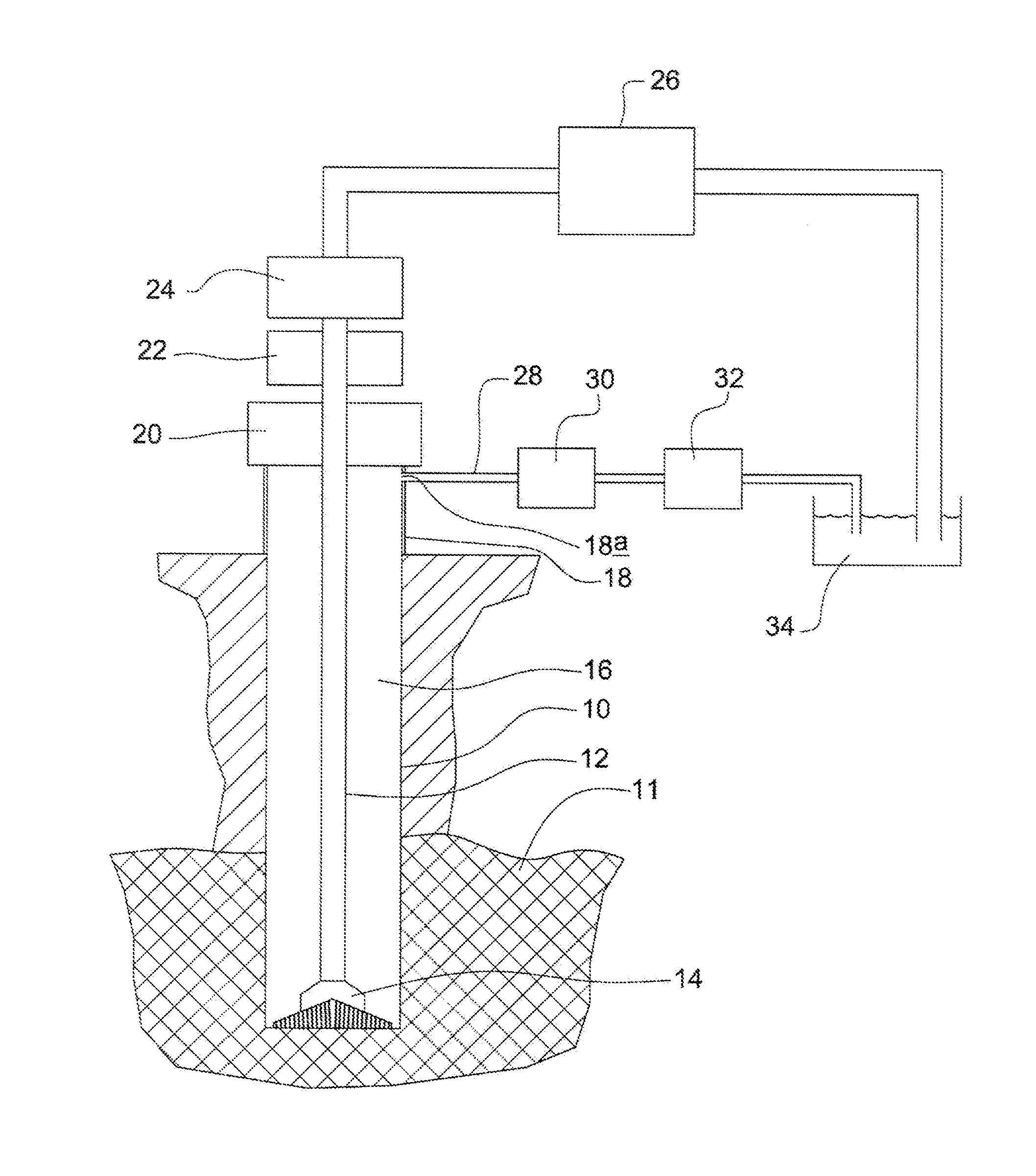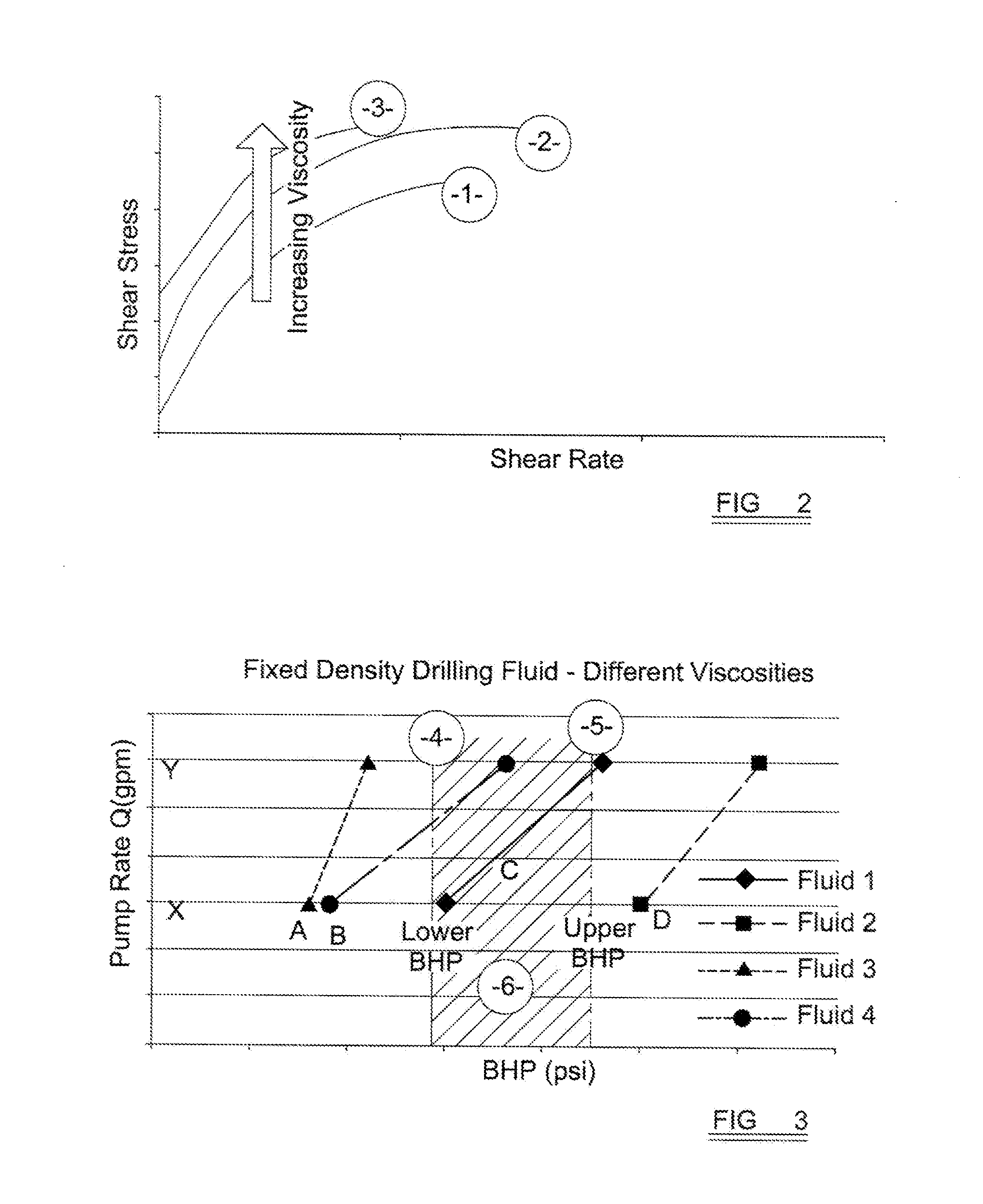Drilling Method For Drilling A Subterranean Borehole
a subterranean borehole and drilling method technology, applied in earth drilling, wellbore/well accessories, chemistry apparatus and processes, etc., can solve the problems of not controlling the pressure/ecd along the entire wellbore length, significant pressure is required to move, and friction loss between fluid and contact surfaces
- Summary
- Abstract
- Description
- Claims
- Application Information
AI Technical Summary
Benefits of technology
Problems solved by technology
Method used
Image
Examples
Embodiment Construction
[0017]According to a first aspect of the invention we provide a method of drilling a subterranean borehole comprising:[0018]a) pumping a drilling fluid into an uppermost end of a drillstring, the drillstring having a bit at an end thereof,[0019]b) rotating the drillstring about its longitudinal axis so that the bit forms a borehole in the ground,
the method further comprising the steps of:[0020]c) determining a desired drilling fluid flow rate range[0021]d) determining the desired upper and lower limits of the fluid pressure at the bottom of the wellbore (the BHP);[0022]e) determining the viscosity of drilling fluid which will maintain the BHP within the range set by the upper and lower BHP limits over the entire or the majority of the required drilling flow rate range;[0023]f) adjusting the composition of a drilling fluid to bring the drilling fluid to the viscosity calculated in step e above.
[0024]Steps c, d, e and f may be carried out prior to steps a and b (i.e. before drilling h...
PUM
 Login to View More
Login to View More Abstract
Description
Claims
Application Information
 Login to View More
Login to View More - R&D
- Intellectual Property
- Life Sciences
- Materials
- Tech Scout
- Unparalleled Data Quality
- Higher Quality Content
- 60% Fewer Hallucinations
Browse by: Latest US Patents, China's latest patents, Technical Efficacy Thesaurus, Application Domain, Technology Topic, Popular Technical Reports.
© 2025 PatSnap. All rights reserved.Legal|Privacy policy|Modern Slavery Act Transparency Statement|Sitemap|About US| Contact US: help@patsnap.com



